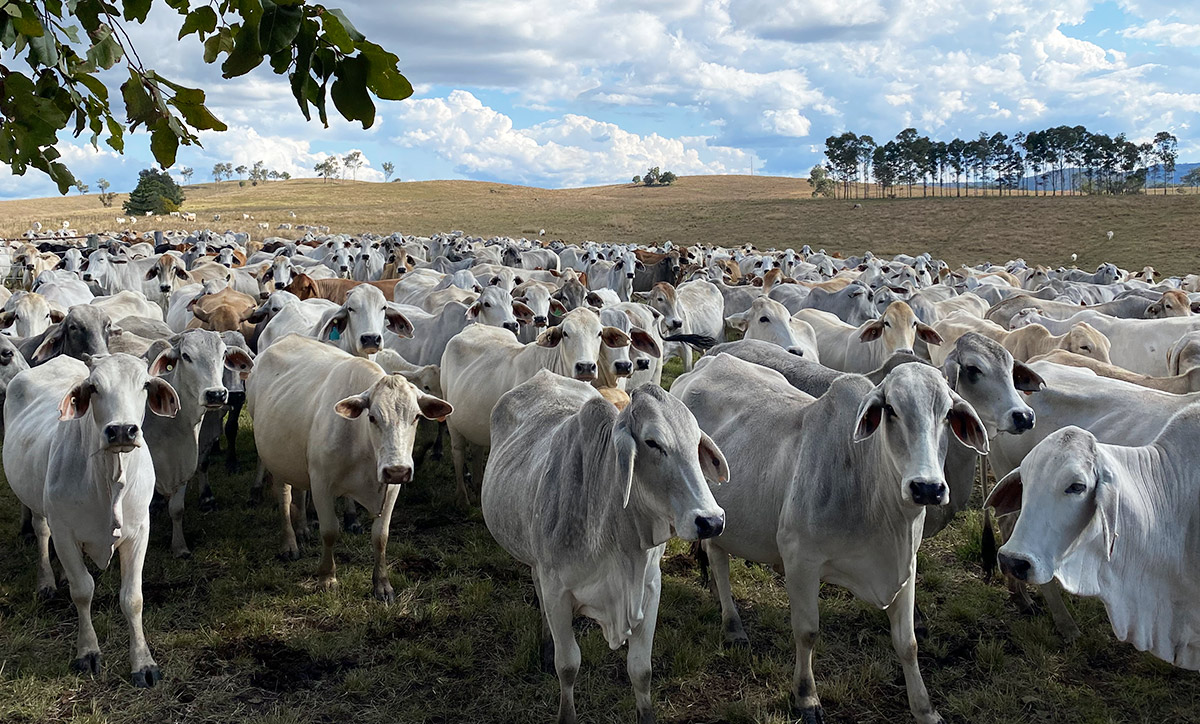Trading Livestock – What’s at ‘Steak’?

Oct 20, 2022
Chris Howie, StockCo’s National Business Development Manager and regular Beef Central Columnist talks through the considerations you should make before you buy.
Many of us hear about various producers who trade livestock but have never really taken the time to consider why or what type of margin is available. Often the thought process is driven by what the bank balance looks like because we are still waiting for the harvest or shearing to bring some money in. Not by the potential to convert excess feed into weight gain, calves, lambs or wool.
In the old days punting was the vernacular because livestock were brought on the hope of rain and extra weight without a clear market in sight. High risk on a hopeful return – same as betting on horses.
Jump forward to 2022 and professional trading operations manage their feed by mapping and understanding how many kilos of weight gain / production are available. The next generation are now viewing their trades as kilos in against kilos out as well as average daily weight gain or loss (ADG) not how many head went on the truck.
In Australia we are very good at looking at feed from the ute and “guesstimating” how many head we can put in without much thought extended to the result specific to weight gain and available time on feed.
This new thought process can be a bit daunting at the start until you begin to use the actual information you have available specific to your feed and livestock. Much the same as looking at your crops and having a reasonable idea of how many tonnes per acre. The more you measure your feed and livestock, the better you get at understanding what your potential is.
It is important to remember the buy price always determines the profit margin as you can control what you spend on the day.
So, what should you consider before stepping into a trade?
- What is your infrastructure set up to handle? – Don’t jump into trading woolly lambs if you don’t have a shearing shed or cattle if your fences are stuffed and there’s no sound yard infrastructure.
- What is your target market specification? – Feeder steers, grass fed bullocks, PTIC heifers, trade or heavy lamb? – Can you meet these specifications?
- Can you get a forward contract in place at time of purchase?
- How much feed do you have, and will it finish the livestock or will you need to supplementary feed?
- Are you able to supplementary feed and do you understand the grain feeding risks?
- What liveweight do you need to start with to ensure you obtain the right sale weight – live or carcass?
- What time frame is available to you?
- Have you assessed your feed quality and quantity and how much weight gain it can provide?
- Are you prepared to spend the money on animal health to ensure you get the maximum performance form your livestock?
Gathering this information via your agent, processor or from our livestock focused team at StockCo allows you to have a clear view of the trade before lifting your bidding finger.
Does the current market provide opportunity to trade?
If you have considered the above my suggestion is yes. It is always hard to reconcile in your own mind buying trade stock on a falling market. From my point of view there is no better time – go against trend, don’t be scared to offer under the current value because often if passed in the agent or vendor will come back to you the next day.
Think of opportunistic trades in the first instance, not about becoming a full-time trader. Step into the market in a manageable way – perhaps 1 load that does not put you or your feed position under pressure.
A bit like Nanna feeding your kids ice-cream, give them as much as they can handle and still have plenty left over. Test the water, understand the performance, ask for feedback when you sell them. Baby steps provide the best results and having a specific trade facility in place with StockCo removes the angst of trying to get your bank manager to approve that temporary limit increase in record time.
Even if you don’t need finance, we are always available to provide any information you may need or direct you to the best source. Our Regional Livestock Managers are pretty friendly and their numbers can be found here.
Happy trading.


